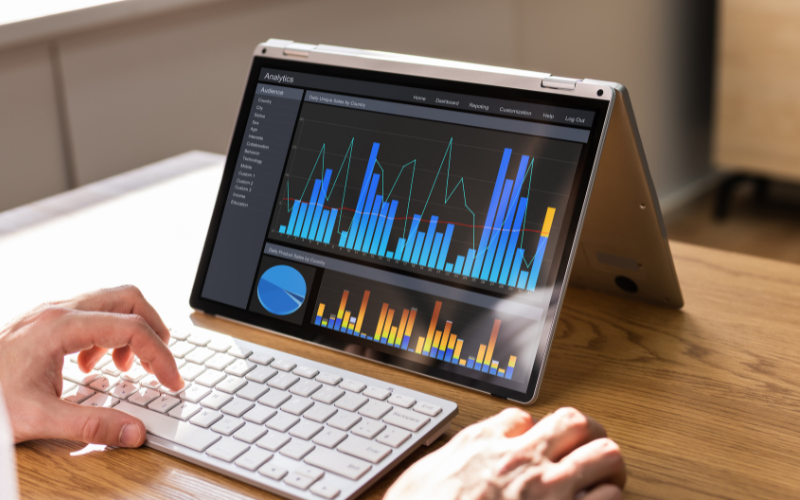How Artificial Intelligence is Revolutionizing Diabetes Care

Thirty years ago, I got diagnosed with diabetes. In the beginning, managing this condition felt incredibly overwhelming. The monitoring options were limited, and not that convenient. Thanks to technological advances, the monitoring process has become easier and a lot smoother.
Now, technologies have gotten more advanced, to the point where AI-powered tools have become available. AI in diabetes care has so much to offer.
These tools can help us deal with complex problems and analyze vast amounts of data. When used properly, they can have the potential to revolutionize medical technologies. With automation, we can improve treatment outcomes and overall health, especially diabetes control.
By analyzing patterns in blood sugar data, AI algorithms can predict future glucose levels. This can give us the chance to take preventive measures. But, the role of artificial intelligence in diabetes management goes deeper than that. Here, I want to share the different ways artificial intelligence can improve patient care for people with diabetes.
5 Ways Artificial Intelligence Revolutionizes Diabetes Care
Diabetes can be a burden. It requires ongoing management, has a high financial cost, and requires regular lifestyle adjustments. Innovative technologies, like AI, can alleviate this burden. They can improve diabetes care, and reduce the risk of complications.
Artificial intelligence and machine learning (AI/ML) have revolutionized various aspects of our lives, and the healthcare system is no exception. Research shows that the application of AI/ML has the potential to significantly improve diabetes care. It makes management more efficient and accessible to a larger population.
Diabetes Self-Management
Artificial intelligence can take diabetes self-management to a completely different level. AI can provide personalized insights, predictive analytics, and real-time monitoring.
Here are a couple of examples of artificial intelligence in diabetes care:
- AI-powered CGMs. The system comes with mathematical dosing algorithms powered by machine learning. These algorithms calculate and administer insulin or/and glucagon automatically by analyzing the data from the CGM.
- Smart insulin delivery systems. The Bionic pancreas is a classic example of next-generation technology that uses AI algorithms. With it, you can get optimized and personalized glucose control.
- Virtual diabetes assistant. An app-based platform can help people with diabetes get access to medical information. As well as reminders, advice, and appointments. Multiple studies show that this kind of technology can help people remember to take their medicine. It can also offer tips on how to improve blood sugar management.
Diabetic Retinopathy Detection and Monitoring
The use of artificial Intelligence in diabetic retinopathy has many advantages. Healthcare experts can effectively use deep learning to automate the diagnosis of diabetic retinopathy. This is a complication of diabetes that can result in blindness and vision loss.
Out of around 285 million individuals globally who have diabetes, roughly one-third show symptoms of diabetic retinopathy.
A recent 2023 research article evaluated the performance of general ophthalmologists, retina specialists, and the EyeArt Artificial Intelligence (AI) system in detecting more than mild diabetic retinopathy (mtmDR).
The research involved 521 patients with diabetes mellitus who underwent various tests. Results showed that the EyeArt AI system had higher sensitivity in detecting mtmDR. The data was compared to both general ophthalmologists and retina specialists.
The AI system identified 97% of positive cases, while retina specialists achieved 59.5% sensitivity, and general ophthalmologists achieved 20.6% sensitivity.
Specificity, which measures correctly identifying negative cases, was high for all groups, with the AI system showing a specificity of 88%, retina specialists at 98.9%, and general ophthalmologists at 99.8%.
The AI system has the potential to be a cost-effective point-of-care tool for diabetic retinopathy detection. It could help ease the burden of diabetic eye screening.
Complications Monitoring
Diabetes can cause a range of complications. If you’ve had the disease for years, then you know how draining these complications can be.
From peripheral nerve problems, such as pain in the feet and hands, numbness, and weakness, to vascular issues, such as arterial disease, these complications can have a profound impact on your quality of life.
When I first got diagnosed with the condition, I had trouble keeping my blood sugar in check. I felt exhausted and drained.
Machine learning can help identify and monitor other health problems as well. For example, there is an app called FootSnap that can help predict the odds of foot ulcers and inflammation.
And considering that 60% of people with diabetes develop neuropathy, which could eventually lead to foot ulcers, apps such as these can make a valuable addition to monitoring the risks of diabetes-related complications.
Diabetes Early Diagnosis
Many of us use wearable devices like Fitbit or Samsung Health to monitor our daily activities, sleep patterns, and calorie consumption. These devices could revolutionize the way we detect diabetes.
Think about it: one of the biggest problems healthcare experts face today is getting access to data backed by real-life samples. AI can collect, research, and analyze huge amounts of data. The data it collects holds the potential to prevent conditions like type 2 Diabetes.
For example, they can send alerts if your data shows signs that resemble type 2 diabetes, even before its onset. They can also track your statistics and provide information on preventive measures. Such as monitoring sugar intake in meals and offering healthy dietary advice. You can then share this data with your doctor or diabetes healthcare team.
Leveraging Genomics
Genomics and AI are the two most powerful technologies of the 21st century. AI algorithms can analyze genomic data and identify specific genetic variants associated with diabetes risk.
Advanced machine learning models have proven invaluable in deciphering enormous amounts of genomic data. Therefore, allowing us to identify the root causes of extremely rare and previously undiagnosed genetic disorders.
This can be useful for providing personalized risk assessments and adequate preventive measures.
At the same time, cutting-edge phenotyping technologies, powered by deep learning algorithms, have enabled the analysis, collection, and organization of physiological data. All in an effort to generate accurate genetic diagnoses and provide valuable clinical insights.
Additionally, AI can be used to uncover medications customized to an individual's unique genetic makeup. It ushers in a new era of precision medicine.
Conclusion
The impact of AI in diabetes care is nothing short of transformative. As time goes on, this technology will only improve. For the time being, we can leverage the numerous advantages of improving life with diabetes.



